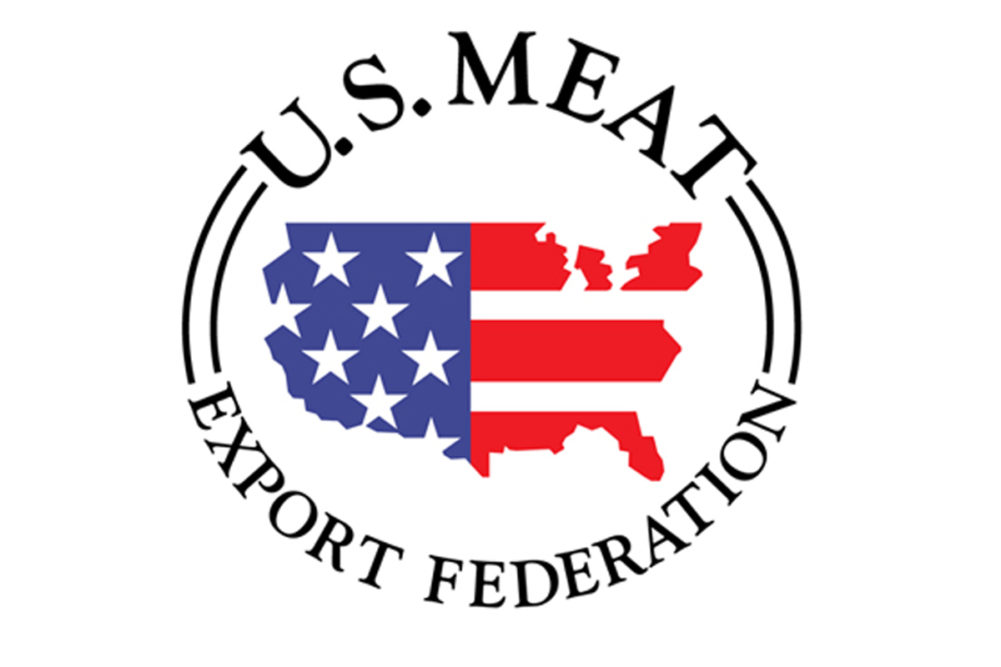WASHINGTON – As the world continues to deal with the outbreak of the coronavirus (COVID-19), Dan Halstrom, president and chief executive officer of the US Meat Export Federation (USMEF), said the epidemic did have some impact on red meat exports from the United States for January, but will have a far greater impact on the February and March numbers.
“The first quarantine actions in China were taken in late January and the calendar had turned to February before coronavirus became a major health concern in countries such as South Korea and Japan,” Halstrom said. “But despite logistical challenges, a severe decline in tourism and a notable impact on sit-down dining, overall demand for red meat in these markets is quite resilient. Retail meat sales have remained strong and both retailers and restaurateurs are utilizing e-commerce and delivery services at unprecedented levels.”
After a strong finish in 2019, January pork exports from the United States were slightly lower than the volume and value record levels established in December 2019, while still exceeding levels from the previous January.
Pork exports increased 36% year-over-year in January to 273,603 tonnes. Export value was up 50% to $738.7 million, the second highest on record, the USMEF reported.
Pork export value per head slaughtered was $62.53, which is up 40% from 2019.
Exports accounted for a record-setting 29.8% of total pork production and 27.4% for muscle cuts only, which is up 4% from a year ago. Muscle cut value increased 5% to $589.2 million.
USMEF noted that pork demand in China/Hong Kong stayed strong in January, with Mexican exports starting to bounce back more.
China/Hong Kong’s demand for US pork climbed high again in January at 97,002 tonnes – 263% more than the year-ago volume – while value was 361% more at $245.3 million.
Pork exports to Mexico climbed again in January. December volume reached 70,460 tonnes, up 6% from a year ago, and export value surged 40% to $134.7 million.
“The January data really underscore the difficult situation US pork was facing in Mexico a year ago,” Halstrom said. “Exporters kept much of the volume moving, but the US industry absorbed most of the 20% duty in the form of lower prices. With duty-free access restored and the US-Mexico-Canada Agreement moving toward implementation, we look forward to a continued rebound in Mexico’s demand for US pork.”
Beef exports posted modest growth compared to pork. Beef volume increased 2.5% in volume (107,374 tonnes) and 5% in value ($672.7 million)
Exports account for 13.1% of total beef production, which was slightly down from a year ago, and 10.6% for muscle cuts only (steady with the January 2019 figure).
Top USMEF exporters in beef to start 2020 were Taiwan and Mexico. Beef exports to Taiwan showed a 24% increase from a year ago in volume (5,226 tonnes) and valued at $43.5 million which is up 18%. The trade association said that the United States dominates Taiwan’s chilled beef export market and has captured 75% market share in 2019 and 83% going into January 2020.
“The Taiwanese market is a remarkable success story for US beef, especially for a country with fewer than 25 million residents,” Halstrom said. “US beef has an ever-widening footprint in Taiwan that goes way beyond high-end dining and retail. By introducing a wider range of cuts, the US industry and its importers and customers are finding new ways - including exciting new retail packaging and merchandising techniques - to capitalize on growing demand in Taiwan and make US beef available to more and more consumers.”
Beef shipments to Mexico were also up 4% from a year ago to 21,992 tonnes. Value also increased 15% to $117.2 million. Mexico is the largest destination for beef variety meat exports, which increased 9% to 9,438 tonnes, valued at $26.7 million (up 14%).
After a record year, South Korea remains strong even with volume slight down from January 2019, at 17,794 tonnes and down 1%.
Lower tariff rates have started to kick in for beef exports in leading market Japan. However, volume still declined 3% from a year ago in January to 25,205 tonnes, valued at $158.1 million (down 5%).
USMEF noted that import data show chilled beef volume to Japan increased 14% to 10,686 tonnes. The tariff rate for US beef muscle cuts dropped from 38.5% to 26.6% on Jan. 1 and will decline to 25.8% on April 1, the same rates imposed on major competitors in Japan.
For January 2020, lamb export volume were down 31 percent from a year ago to 959. Value declined percent to $2.1 million.

